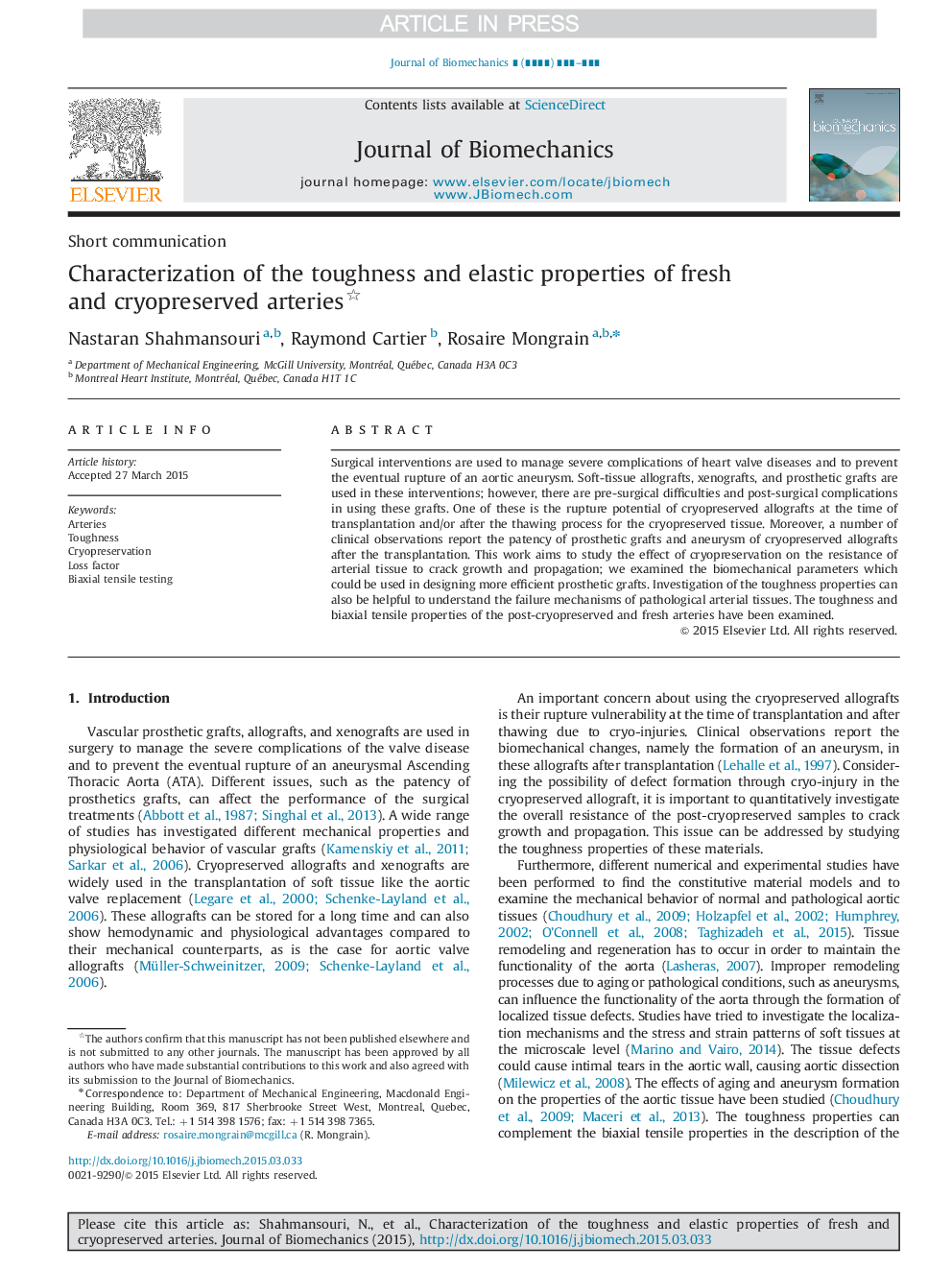| Article ID | Journal | Published Year | Pages | File Type |
|---|---|---|---|---|
| 10431446 | Journal of Biomechanics | 2015 | 5 Pages |
Abstract
Surgical interventions are used to manage severe complications of heart valve diseases and to prevent the eventual rupture of an aortic aneurysm. Soft-tissue allografts, xenografts, and prosthetic grafts are used in these interventions; however, there are pre-surgical difficulties and post-surgical complications in using these grafts. One of these is the rupture potential of cryopreserved allografts at the time of transplantation and/or after the thawing process for the cryopreserved tissue. Moreover, a number of clinical observations report the patency of prosthetic grafts and aneurysm of cryopreserved allografts after the transplantation. This work aims to study the effect of cryopreservation on the resistance of arterial tissue to crack growth and propagation; we examined the biomechanical parameters which could be used in designing more efficient prosthetic grafts. Investigation of the toughness properties can also be helpful to understand the failure mechanisms of pathological arterial tissues. The toughness and biaxial tensile properties of the post-cryopreserved and fresh arteries have been examined.
Related Topics
Physical Sciences and Engineering
Engineering
Biomedical Engineering
Authors
Nastaran Shahmansouri, Raymond Cartier, Rosaire Mongrain,
